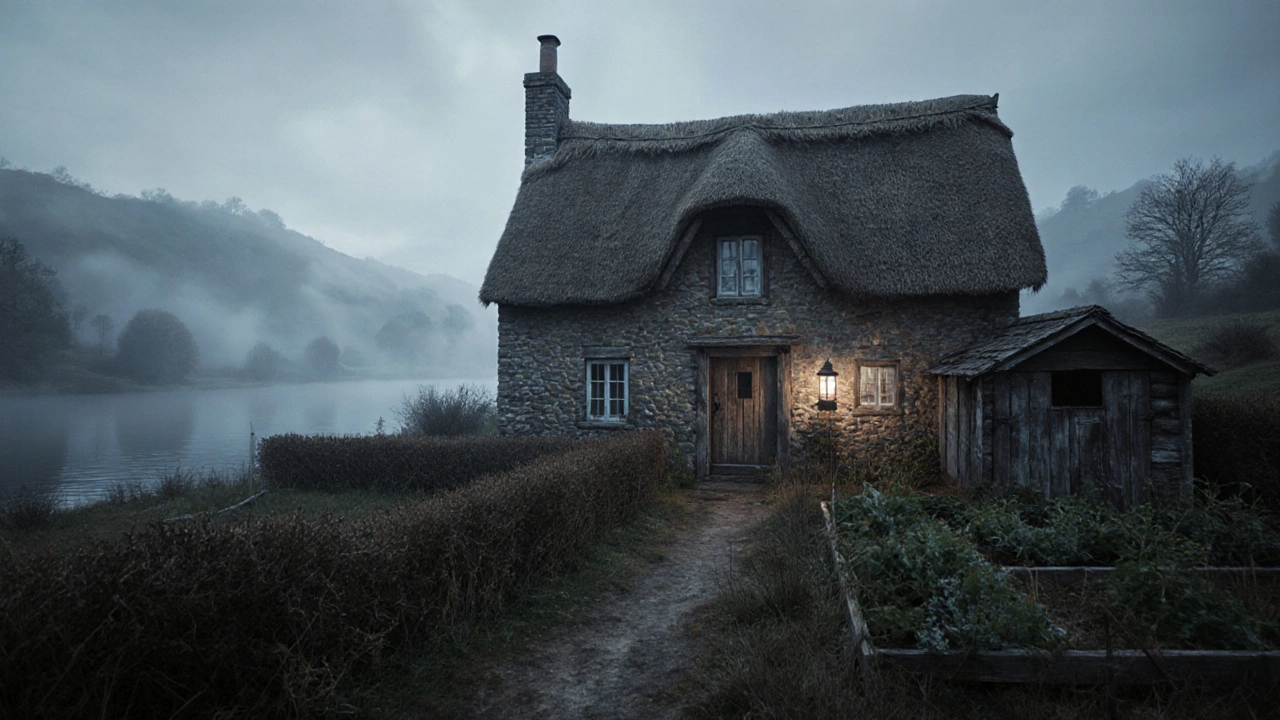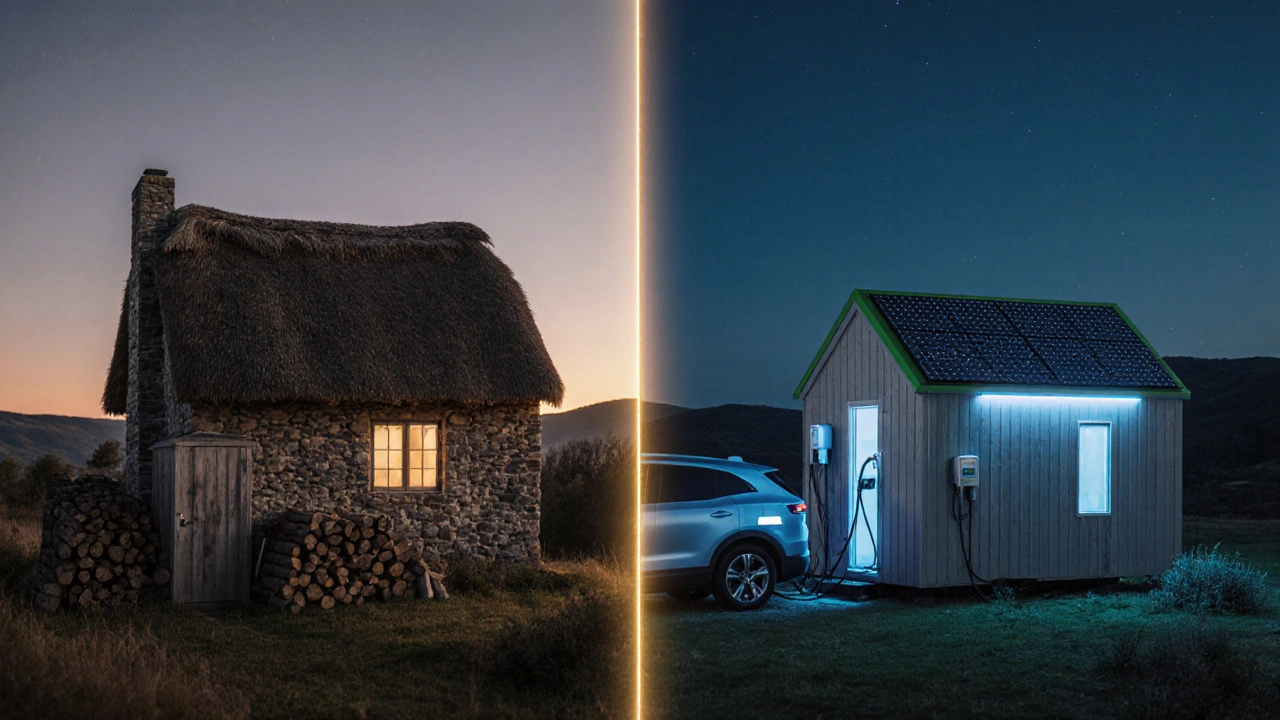What Is the Difference Between a Cottage and a Small House?

Cottage vs Small House Identifier
How to Use This Tool
Select all characteristics that apply to the property you're evaluating. The tool will determine whether it aligns more closely with traditional cottage or modern small house design based on the article's key differences.
Property Characteristics
Modern Features
Select characteristics to see the identification result
People often use the words cottage and small house interchangeably, but they’re not the same thing. If you’re looking to buy, rent, or even just imagine your next quiet getaway, understanding the difference matters. A cottage isn’t just a tiny house with a garden. And a small house isn’t just a cottage that got bigger. The distinction comes down to history, design, purpose, and even how the land around it behaves.
History Shapes the Look
Cottages started as homes for rural workers-farmhands, shepherds, gardeners. In England, Ireland, and parts of Canada, they were built in the 1700s and 1800s using local materials: stone, timber, thatch, or rough-hewn wood. They were small, simple, and built to last with minimal upkeep. Many had one or two rooms downstairs, a loft bedroom, and a stone hearth for cooking and warmth.
Small houses, on the other hand, are a modern concept. They emerged in the 20th century as a response to urban crowding and later, as part of the tiny home movement. They’re designed with efficiency in mind-open floor plans, multi-use furniture, built-in storage. You’ll find them in suburbs, near cities, or even on urban lots. They’re not tied to a specific region or class of worker. They’re built for lifestyle, not necessity.
Architecture Tells the Story
Look at a traditional cottage, and you’ll see sloped roofs, thick walls, small windows, and often a chimney that sticks out like a finger. The windows are usually casement-style, sometimes with wooden shutters. The front door might be slightly off-center. It doesn’t look symmetrical because it wasn’t designed to. It was built by hand, one piece at a time.
A small house, even if it’s under 800 square feet, looks different. It’s likely to have larger windows-often double or triple-glazed-for natural light. The roof is probably a simple gable or hip design, made of asphalt shingles or metal. The walls are insulated and finished with drywall or siding. You’ll see clean lines, minimal trim, and maybe a modern front porch with steel railings. It looks intentional, not accidental.
Location Matters More Than You Think
Cottages are almost always in the countryside. They sit on land that’s been farmed, wooded, or left wild. They’re often tucked into valleys, beside lakes, or hidden behind hedgerows. Access might be a gravel road. Electricity might have been added later. Plumbing could be a well and septic system. You don’t find cottages in downtown Toronto or suburban Vancouver.
Small houses can be anywhere. You’ll see them on the edge of towns, in housing developments, or even replacing garages in older neighborhoods. Some are built on wheels as mobile tiny homes. Others sit on concrete slabs in planned communities. They’re designed to fit into existing infrastructure-municipal water, sewer, and power lines. A small house can be in a city, but a cottage can’t.

Function and Use Are Different
Traditionally, cottages were lived in year-round by working families. Today, many are used as vacation homes. But even then, they’re not designed for luxury. You might find a wood stove, a clawfoot tub, and a kitchen with a single sink. The charm is in the simplicity. Heating can be unpredictable. Insulation might be thin. That’s not a flaw-it’s part of the experience.
Small houses are built to be comfortable, efficient, and low-maintenance. They often have modern HVAC systems, energy-efficient appliances, and smart home features. People live in them full-time because they want to downsize, save money, or live sustainably. They’re not about nostalgia. They’re about optimization.
Land and Outbuildings Define the Difference
A cottage usually comes with land. Not just a yard-a plot. Maybe half an acre, maybe more. It might have a chicken coop, a shed for firewood, a vegetable garden, or a privy. The land isn’t just an afterthought; it’s part of the cottage’s identity. You don’t buy a cottage without thinking about what you’ll grow, chop, or raise on it.
A small house might come with a tiny lot-sometimes as little as 1,500 square feet. The yard is often manicured, with lawn and flower beds. There’s no need for a woodshed because you don’t chop wood. The garage might be attached. The focus is on curb appeal, not self-sufficiency.

Price and Value Don’t Match
Don’t assume a cottage is cheaper just because it’s smaller. A restored 19th-century stone cottage with a well, a wood-fired oven, and 2 acres of forest in the Muskoka region can cost $700,000 or more. Its value comes from history, location, and rarity.
A small house built in 2023 with solar panels, a heat pump, and a modern kitchen might cost $350,000. Its value comes from efficiency, low operating costs, and market demand. One is a piece of heritage. The other is a piece of engineering.
Who Chooses What?
If you want peace, quiet, and a place to disconnect from the digital world-a cottage is your match. You’ll need patience. You’ll need to learn how to light a fire. You’ll need to accept that the Wi-Fi might be spotty. But you’ll also get morning fog over the lake, the sound of wood crackling in the stove, and the smell of damp earth after rain.
If you want to live simply but still have reliable heat, fast internet, and a dishwasher-then a small house is your answer. You can still live with intention. You can still be eco-conscious. But you won’t have to carry water or dig a septic trench. It’s modern simplicity, not historical authenticity.
There’s No Right or Wrong
Choosing between a cottage and a small house isn’t about which is better. It’s about what kind of life you want to live. One pulls you back in time. The other helps you live smarter today.
Some people buy a cottage and spend years fixing it up. Others buy a small house and spend years living in it without changing a thing. Both can feel like home. But they feel like different kinds of home.
Can a small house be called a cottage?
Technically, no-not if you’re being precise. A cottage has historical roots, traditional design, and rural location. A modern small house built in a suburb with vinyl siding and central heating doesn’t qualify. But in casual conversation, people often call any small, cozy home a cottage. Real estate listings are full of "cottage-style" homes that have nothing to do with actual cottages. It’s a marketing term now, not a technical one.
Do cottages have running water and electricity?
Many older cottages were built without modern utilities. Today, most that are still in use have been upgraded. But some owners choose to keep them basic-using solar power, well water, and composting toilets-to preserve the authentic experience. It’s a personal choice. You can find cottages with full modern amenities, but they’re not the norm. The charm often lies in the lack of them.
Are cottages cheaper to maintain than small houses?
Not usually. A cottage with a thatched roof, stone walls, or an old septic system can cost more to maintain than a modern small house. Small houses are built with standardized materials and energy-efficient systems that reduce long-term costs. Cottages often need specialized repairs-like replacing hand-laid bricks or repairing a wood-burning stove. The cost isn’t just in money-it’s in time and effort.
Can you live in a cottage year-round?
Yes, many people do-especially in places like rural Ontario, Nova Scotia, or the Scottish Highlands. But it requires preparation. Winter heating is a big challenge. Insulation is often poor. Pipes can freeze. If you’re thinking of full-time living, you’ll need to upgrade the plumbing, add proper insulation, and possibly install a backup generator. It’s doable, but it’s not the same as living in a small house designed for year-round comfort.
What’s the best way to tell if a property is a true cottage?
Look at three things: the year it was built (pre-1950 is a good sign), the materials used (stone, timber, brick), and the location (rural, away from paved roads). Check the land-does it have an old shed, a woodpile, or a garden that looks like it’s been tended for decades? A true cottage feels like it grew out of the land, not like it was dropped onto it. Ask the owner how long the property’s been in the family. If they say "my grandparents built it," you’re likely looking at a real one.